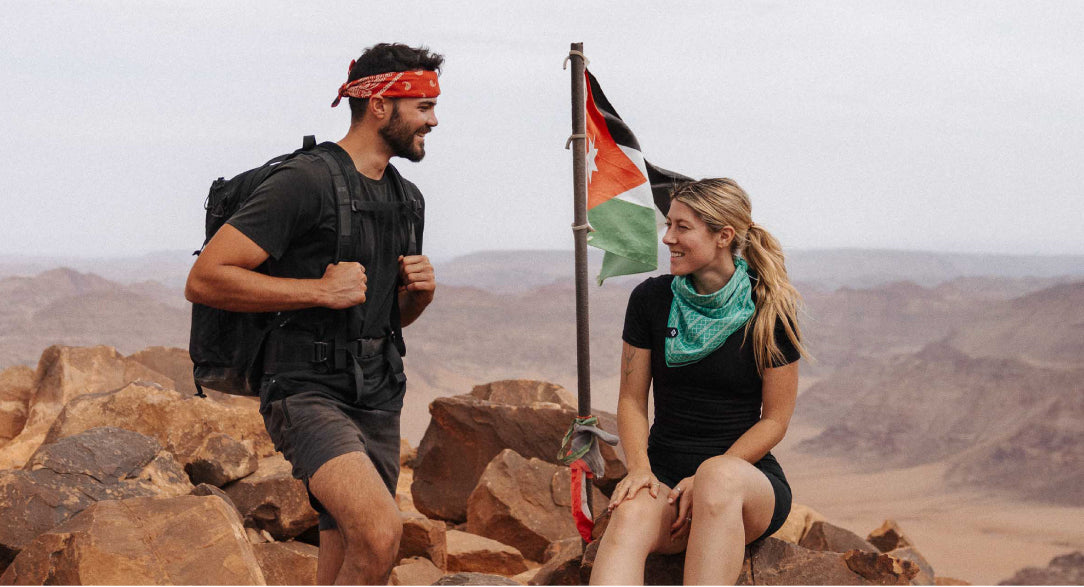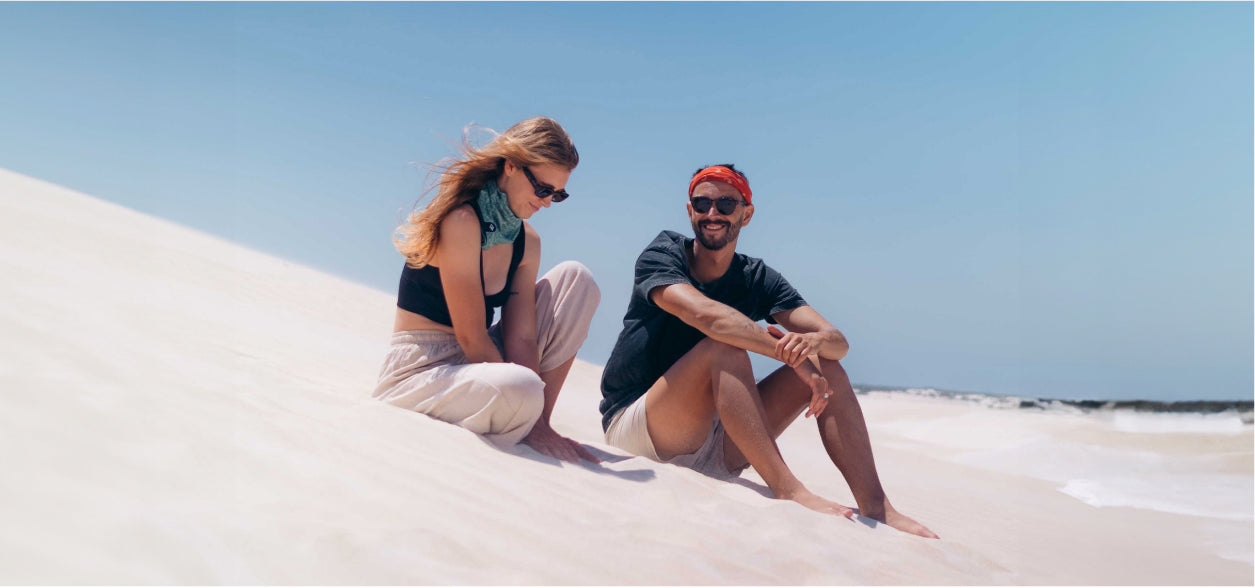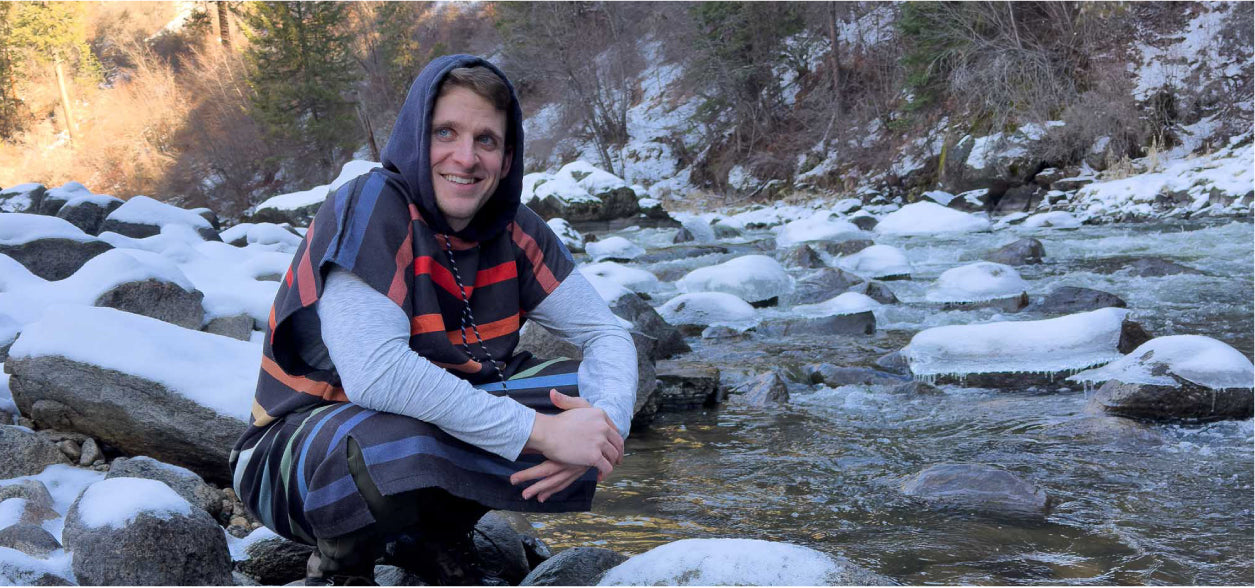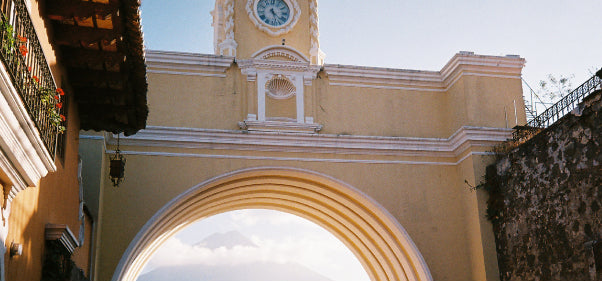Photography & Words by Colleen Logan
There's a growing appreciation for the art of traveling light – not just in terms of luggage weight but as a lifestyle that brings more joy, freedom, and spontaneity to our adventures. By embracing simplicity on the road, we have the opportunity to shift our focus away from material things and instead create space for moments that truly matter.
With that in mind, in November of 2023, I challenged myself to bring only the essentials as I ventured to the beautiful country of Jordan in the Middle East - minimal clothing and toiletries, my camera and of course, a Nomadix travel towel.

After spending a few days getting settled in the capital city of Amman, we headed south to one of the seven wonders of the world – the lost city of Petra. Hidden in a valley surrounded by desert and mountains is an entire city carved out of stone. Walking through the narrow canyon, known as the Siq, and witnessing the iconic Treasury emerge from the rocks was a surreal experience. The entire site is a testament to the rich history of the region, and every inch of rock seemed to tell a story of the past.

The Siq is the main entrance, a rose-coloured 1.2-kilometer gorge leading to the city of Petra. Its walls stand an impressive 80m high at some points. I couldn’t help but notice small channels carved out of the side of the rock, which I later learned were remnants of an innovative water management system built by the Nabataean people over 2000 years ago.
At the end of the Siq, the Treasury appeared from behind the rocks - the most beautiful and well-known sight in Petra. It was hard to believe that the ornate carving of the columns were original, never losing their detail after all this time. Down at the base, it is unlikely you will get much space for yourself. To get a more private vantage point, we decided to pay a little extra to have a guide take us up to the viewpoint where we could see the site from above. Well worth the extra $8.

The other most famous structure in Petra is the Monastery. The trail from the Treasury towards the Monastery took about 1.5 hours and included a solid 40 minutes of stair climbing. The hike’s reward lay in its breathtaking panoramic views over the valley, making the effort entirely worthwhile. On the way, many donkeys passed carrying tourists; recognizing the ethical concerns surrounding their treatment, I opted for the simplicity of walking independently.
This decision not only aligned with the principles of conscious tourism but also provided a calmer, more thought-provoking experience, allowing me to appreciate the historical significance of the journey and put myself in the shoes of the people who lived in Petra thousands of years ago.

When planning a trip to Jordan, the Dead Sea is a must. Floating in the Dead Sea is a sensation like no other. The high salt concentration in the water makes it virtually impossible to sink, and the feeling of effortlessly floating on the surface is both surreal and exhilarating.

The Dead Sea offers more than just a unique swimming experience. The mud along the shoreline is also famous for its rejuvenating properties because it is so rich in minerals. Though our time in the Dead Sea was short, we made sure to take some time to go for a dip, have a DIY spa day and watch the sunset, all right there on the shore of the beautiful white salt beaches.

The final leg of our journey to the south of Jordan offered the opportunity for a more immersive cultural experience. Often referred to as the Valley of the Moon, Wadi Rum is breathtaking with its otherworldly beauty. With red sand dunes and towering rocky mountains, it looks like a scene from another planet. Additionally, because there is no cell reception in much of the desert, visitors are given the chance to fully connect with the landscape and culture, without outside distractions.

For those looking to add a thrilling dimension to their Jordanian journey, there’s no better way than hopping into a 4x4 jeep. The experience was like stepping into a scene from an action movie. The local guides, with their expert knowledge of the desert, effortlessly maneuvered over the sandy hills and through narrow canyons, creating an adrenaline-pumping roller coaster for us on the desert floor. The sheer joy of speeding over the dunes and witnessing the breathtaking vistas at every turn was indescribable.

While it was still fun to visit the well-known locations like Um Fruth rock bridge and Abu Khashaba canyon, hiking the tallest peak in Wadi Rum was a moment I will never forget. Standing up there provided an incredible perspective of the vastness of the desert. On a clear day, you are rewarded with panoramic views over the entire desert and can even see the Saudi Arabian border and the Aqaba sea in the distance.

Finally, to add an extra layer of cultural authenticity, we spent one night in a Bedouin tent and another camped out under the stars. The Bedouin people are the nomadic Arab tribes of the desert, and staying in one of their camps was a genuine cultural experience.
Throughout the trip, I’d embraced a minimalist mindset and brought fewer, more versatile items. So, during our time in the desert, I found myself resonating with the Bedouin way of life. Their lifestyle emphasizes contentment with simplicity and minimal possessions. That night, under the stars, our guide Rakan talked about how happiness isn't tied to material things but instead to the richness of shared experiences. I felt a profound sense of connection to my surroundings and our Bedouin hosts, reminding me of the power of minimalism to bring us closer to the heart of every adventure.

Jordan, with its hidden gems and untold stories, has left a mark on my heart. I discovered that having fewer, more versatile items not only lightened the physical load when traveling from place to place, but also cleared mental clutter, leaving more room to immerse myself in the adventures and build meaningful connections with the locals and my fellow travelers.
Key items to be more minimal (and sustainable) on the road:
-
Capsule Wardrobe - Putting together a small capsule wardrobe with interchangeable pieces will not only save you time and energy when repacking and changing locations, but will also reduce your vehicle's fuel intake and lower the journey's carbon footprint.
-
Packing Cubes - Keeping your clothes neat, compact, and easy to find is key when traveling more minimally. With packing cubes, everything has its place, making travel smoother and more enjoyable.
-
Eco-friendly Toiletries - These not only cut down on waste but are also made of natural materials that won't harm the environment, so you really are leaving nothing but footprints. This can include things like: bar shampoo & soap, bamboo toothbrush, toothpaste tabs, natural deodorant, etc.
-
Nomadix Ultralight Towel - A lightweight towel comes in handy more than you might think and it packs down to be smaller than a rolled-up t-shirt! It’s perfect for things like impromptu dips in the ocean, drying hand washed laundry or a blanket on the plane.
-
Reusable Water Bottle - Not only is it eco-friendly, reducing single-use plastic waste, but it also saves you money on purchasing water frequently while on the go.
- Power Adapter - This not only allows you to charge your electronic devices in countries with different plugs but its multiple ports save space by having every charger you need, all in one place.
Having more items does not automatically mean your experience will be better. Bringing less stuff, will actually leave more room for adventures and experiences. In the end, it's incredible experiences we're looking for when traveling.







